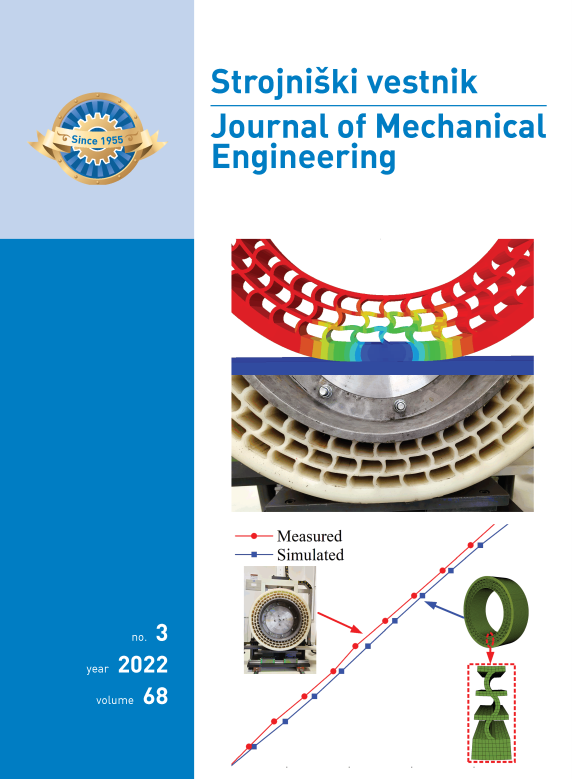Error Prediction for Large Optical Mirror Processing Robot Based on Deep Learning
DOI:
https://doi.org/10.5545/sv-jme.2021.7455Keywords:
Bayesian optimization, BO-LSTM, error prediction, optical mirror processing, hybrid manipulator, hyperparametricsAbstract
Predicting the errors of a large optical mirror processing robot (LOMPR) is very important when studying a feedforward control error compensation strategy to improve the motion accuracy of the LOMPR. Therefore, an end trajectory error prediction model of a LOMPR based on a Bayesian optimized long short-term memory (BO-LSTM) was established. First, the batch size, number of hidden neurons and learning rate of LSTM were optimized using a Bayesian method. Then, the established prediction models were used to predict the errors in the X and Y directions of the spiral trajectory of the LOMPR, and the prediction results were compared with those of back-propagation (BP) neural network. The experimental results show that the training time of the BO-LSTM is reduced to 21.4 % and 15.2 %, respectively, in X and Y directions than that of the BP neural network. Moreover, the MSE, RMSE, and MAE of the prediction error in the X direction were reduced to 9.4 %, 30.5 %, and 31.8 %, respectively; the MSE, RMSE, and MAE of the prediction error in the Y direction were reduced to 9.6 %, 30.8 %, and 37.8 %, respectively. It is verified that the BO-LSTM prediction model could improve not only the accuracy of the end trajectory error prediction of the LOMPR but also the prediction efficiency, which provides a research basis for improving the surface accuracy of an optical mirror.
Downloads
Additional Files
Published
How to Cite
Issue
Section
License
Copyright (c) 2022 The Authors

This work is licensed under a Creative Commons Attribution 4.0 International License.


